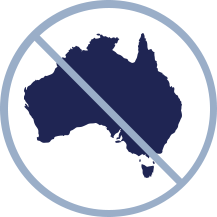With legislation rapidly being implemented there have been a lot of unanswered questions surrounding the JobKeeper wage subsidy. On April 8 2020 the Federal Government passed the package and the Bill received Royal Assent on April 9 2020.
The Treasury continues to release clarification of issues surrounding the JobKeeper payment based on this legislation. Here are some of the key clarifications to help you work out how JobKeeper might work for your business.
Table of relevant dates for the first months of the scheme
| JobKeeper Fortnight Ending | Must be registered by this date to qualify for reimbursement of this period | Date that the business must pay the minimum $1,500 to the employee by | ATO schedule to be pay reimbursements to the business from |
| 12 April 2020 | 26 April 2020 | 30 April 2020 | 14 May 2020 |
| 26 April 2020 | 26 April 2020 | 30 April 2020 | 14 May 2020 |
| 10 May 2020 | 10 May 2020 | 10 May 2020 | End of May 2020 |
| 24 May 2020 | 24 May 2020 | 24 May 2020 | End of May 2020 |
| 7 June 2020 | 7 June 2020 | 7 June 2020 | End of June 2020 |
| 21 June 2020 | 21 June 2020 | 21 June 2020 | End of June 2020 |
Overview Of The JobKeeper Payment
In essence the JobKeeper payment is a wage subsidy for employers who have suffered a loss of income of least 30% of their business turnover. (Or at least 50% loss where the turnover exceeds 1 billion).
Eligible employees are paid a minimum of $1,500 a fortnight through their usual payroll and the government will reimburse the business a fixed amount of $1,500 per fortnight per employee.
For a more detailed explanation on this, including who is eligible, please see our previous post on the JobKeeper package.
Given the sudden announcement of the JobKeeper package there were a lot of unanswered questions. Many of these have now been clarified.
How Do I Know If My Turnover Has Dropped Enough?
The government initially indicated that your decline should be measured by comparing your usual period of trading to the current period of trading. For example the March month this year compared to the March month last year.
They then gave the Commissioner of Taxation the power to issue alternative tests when this did not provide a reasonable assessment of the situation that the business faces, or where the business had not been in operation for at least 12 months.
While it is still not 100% clear how this will work in practice, here is what we do know:
- Turnover and eligibility is measured on a self-assessment basis, using both historical figures and reasonable estimates.
- The ATO has the power to administer tests and provide guidelines on how to make these measures. They will be releasing more guidance on this.
- The Commissioner of Taxation also has discretion to apply some flexibility to the measures.
- Businesses will be required to report their monthly eligibility to the ATO.
The ATO has confirmed that the following in an update on the ATO’s website of 17 April 2020;
“If you work out that you qualify for the JobKeeper payments for the first fortnight because your turnover has declined by the relevant amount, you remain eligible and do not need to keep testing turnover in following months. However, you will have ongoing monthly reporting requirements. More information will be provided soon. (our emphasis added).
The Commissioner of Taxation also has the discretion to set out alternative tests that can establish your eligibility when turnover periods are not appropriately comparable (for example, if your business has been in operation less than a year). We will provide more information soon about alternative tests.”
Applying For The JobKeeper Subsidy
The JobKeeper subsidy is not automatic. You must register for the scheme to receive the wage subsidy.
This was initially done by registering your interest in the program with the ATO through their online form. Note that this is just registering an interest in applying and is not actually the formal application itself.
From 20 April 2020 tax agents will be able to enrol their clients in the JobKeeper Payment Scheme using the ATO’s Online services.
You cannot retrospectively register for the JobKeeper payment in the future. You must be registered under the scheme before the end of any relevant JobKeeper fortnightly payment. Since this is not possible for the first applicable fortnight, this applies to all relevant fortnights except the first one, for which you must be registered by April 26.
In effect this means if you wish to apply for the JobKeeper subsidy from the first possible fortnight then you need to ensure you are enrolled within days of enrolment being open.
If your turnover was not initially impacted by the coronavirus but is, or you expect it will be, as the months progress, then you can register during the first applicable fortnight to commence JobKeeper payments from that fortnight.
Once you register you remain registered and report monthly to confirm ongoing eligibility. The scheme is expected to go on for a total of six months.
Clarification On Who Is An Eligible Employee And Whether The Business Can Choose Who To Enrol
If a business enrols in the JobKeeper program they are required to include ALL eligible employees. This means they can’t refuse to include selected employees from the scheme if that employee is eligible to be included.
An employee is an eligible employee if they:
- Are at least 16 years of age.
- Are an Australian resident for social security purposes or a Subclass 444 (Special Category) visa holder who is a resident of Australia for tax purposes (this effectively covers all NZ citizens who came to Australia on a NZ passport).
- Are a fulltime or part-time employee, OR they are a casual who has worked with the business on a regular and systematic basis for at least 12 months, and the casual has no other place where they are permanently employed. This means a long-term casual cannot be included if they are a fulltime or part-time worker elsewhere, even if their other employer is not able to enrol in the JobKeeper scheme.
- Are not being paid government funded parental leave pay, dad or partner pay, not being fully supported through a worker’s compensation scheme.
In addition the eligible employee:
- Must not have been given notice by any other employer that they are enrolled in the JobKeeper scheme with them. (An individual employee can only be covered by one employer).
- They must complete a JobKeeper employee nomination notice.
How Much Are Employees Paid Under The JobKeeper Scheme?
All eligible employees must be paid a minimum of $1,500 a fortnight by an employer who is enrolled in the JobKeeper scheme.
Where an employee is usually paid more than this, the employer should simply continue to pay the employee their usual wages. For situations where the employee is usually paid less than this, the employer is required to top up the employee’s wages to $1,500 for every eligible JobKeeper fortnight.
If an employee had been stood down after March 1 2020 then the business should now pay the minimum of $1,500 a fortnight to the employee in order to be reimbursed. There is no requirement for an employee to be paid more than this in this situation, even if their normal rate of pay of was higher than $1,500 a fortnight.
When an employee ceased employment after March 1 2020 they can be rehired under the JobKeeper scheme. If they were paid out a redundancy pay, this will need to be sorted out.
When Must JobKeeper Payments Be Made To The Employees?
To be eligible for the JobKeeper wage subsidy you must make the minimum $1,500 payments by the end of the fortnight for which you are claiming.
This means if an employee is normally paid monthly you are required to split the payment so that the employee is actually paid at least their JobKeeper rate for each JobKeeper fortnight.
There is an exception for the first two fortnights. These must be paid by the end of April 2020. This gives employees room to adjust payments for eligible employees for the month that they were sorting out eligibility and waiting on legislation.
Does My Employee Actually Have To Work A Minimum Amount To Be Paid Under The JobKeeper Program Or Can My Employee Refuse To Work While Being Paid Under The JobKeeper Scheme?
If your employee cannot be usefully employed during their normal hours of work for the relevant fortnight, then they can stand down for part or all of the fortnight that they are paid the JobKeeper payment. This does not mean that employees can elect not to work. If they are still able to work, even in a reduced capacity, from home instead of at the business premises, or in any other such way as the business can arrange, then they should still continue to work for their employer.
By the same token an employer cannot use enrolment in this scheme as an opportunity to reduce a staff member’s normal hourly rate of pay.
In effect this means that all eligible employees should be paid either the greater of their normal pay for the hours actually worked or the JobKeeper amount, which may be a payment while they are standing down or include a top up above payment for the actual hours worked.
Is Superannuation Payable On The JobKeeper Payment?
Superannuation is still required as normal on any component of wages that are paid under normal employment conditions. Any component of the $1,500 payment made to eligible employees that is purely a top up to the JobKeeper rate has no superannuation requirement attached. This is because they are not actually working for that component of their wage.
For example:
Jack is an eligible employer who employs Jill. Jill is an eligible employee who normally works part time and is paid $1,000 a fortnight. For the relevant JobKeeper fortnights Jack is required to pay Jill a higher amount of $1,500 a fortnight.
Jack is still required to pay superannuation on $1,000 of each pay, since this is simply Jill being paid her normal wage for the work performed. Jack is not required to pay Superannuation on the additional $500 top up amount that is paid to Jill.
Are Fair Work Conditions Affected By The JobKeeper Scheme?
Amendments have been made to the Fair Work Act 2009 to ensure that the JobKeeper Scheme can work in practice and businesses can adjust their working arrangements to situations that are more flexible and suitable for this time. The basic rights and responsibilities of employees and employers continue, there is just room for flexibility to facilitate the continuation of business operations during the unprecedented restrictions that apply due to the coronavirus.
No adjustments to an employee’s requirements can be used to reduce their base hourly rate of pay. This includes requiring them to work from home or adjusting the tasks that they perform so that they are duties that can be carried out from home. An employee can only be required to work at an alternative place of work if the new work location does not require them to travel an unreasonable distance, in the specific circumstances of the business, from their home.
During the period for which an employer is eligible for JobKeeper they can enter into arrangements with their employees that are different to their normal employment arrangements. This allows an employer to ask their employee to work on different days or times than usual based on the adjusted needs during the coronavirus. This does not allow the employer to reduce the employee’s working hours where there is no reason to.
Employers are also allowed to ask employees to take annual leave (including at half pay) for this period, as long as this will not result in the employee’s leave balance reducing to less than two weeks.
Business Participants: Claiming JobKeeper As A Business Owner
Although we are still waiting on further clarification in regards to how business owners can claim JobKeeper there are a few points that have been released. Perhaps the most important one to note is that only 1 business owner can claim the JobKeeper payments from the business, regardless of how many business owners there are.
Sole traders, partners in a partnership, directors or shareholders of a company, or an adult beneficiary of a trust, are all eligible business participants for the JobKeeper scheme if they are actively engaged in running the business.
These are the important things to note so far:
- Business owners who are eligible business participants can also claim JobKeeper payments for themselves if their business meets the eligibility requirements.
- Even if there are more than 1 eligible business participants in a business, only one individual can be nominated to receive the JobKeeper payment. This means, for example, a partnership entity can only nominate one partner to receive the JobKeeper payments.
- The business must have had an ABN on or before 12 March 2020 to be eligible (unless the Commissioner allows a later time at their discretion).
- The relevant business participant must not be elsewhere eligible for the JobKeeper payment, either as an eligible employee elsewhere, or as a nominated eligible business participant for another business.
This means if an individual is eligible as an employee elsewhere that they cannot be a nominated business participant. If they are employed as a casual elsewhere then they can choose between the casual role or the business as their source of JobKeeper payments. Where an individual could be an eligible business participant in multiple businesses they can only be nominated for one of those businesses.
All individuals are only entitled to receive JobKeeper from one source. All businesses are only entitled to claim JobKeeper for one business owner.
There is not yet a formal application process available for eligible business participants.
Does The Decline In Turnover Test Need To Be Met On An Ongoing Basis?
It now appears that once a business has satisfied the decline in turnover test they can enrol for JobKeeper Payments. Once they are enrolled in the scheme they will continue to be eligible so long as they continue to pay their eligible employees through the scheme.
Does The Business Have To Enrol In The JobKeeper Scheme From The Start?
No. If the business doesn’t initially meet the requirements it can later enrol in the JobKeeper program if they satisfy the decline in turnover tests (and fulfill other eligibility criteria) at a later date.
In Summary
If you wish to apply for the JobKeeper scheme for your business and be eligible for the wage subsidy from the start of the scheme, you will need to enrol and ensure your eligible employees are all confirmed and have been paid their minimum required payments no later than the end of April 2020.
If your business does not become eligible until a later date then you can apply for the JobKeeper scheme from that point in time.
Further clarifications will continue to be provided as the government, and the ATO sort through the processes.



